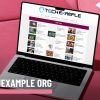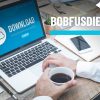If you’re a regular car user, changing your car rims is something that you might only do if they either get scratched by a pavement, or they get completely worn out. For car enthusiasts though, this is a completely different story. Car lovers are known to tweak certain things about their cars just to make things look, sound or even feel better. Most of them do it as a hobby and are even prepared to spend top dollar in their quest to alter or improve the condition of their cars. If you think that this is a hobby that you could easily take to, then one of the parts of your car that could be easier, to begin with, is your car rims.
For those that are completely clueless about cars, a rim is the cylindrical outer edge of a wheel that supports and holds the tire to it. They are definitely among the most noticeable parts of a car. For any true car enthusiast, having a set of rims that complement the car’s aesthetic appeal is very important. You might choose to have them off-the-shelf or get customized diamond-cut alloys. In fact, you can opt to design and personalize your own from scratch thanks to modern-day technology.
Wheels vary in size and style, and this can adversely affect the type of car rims. Bigger wheels are considered sportier and are ranked higher, but they also come with their fair share of cons. Be ready to experience a change in fuel consumption, steering performance, speedometer reading, and quick tire wear if this is what you’d like to go for.
A good rim is one that fits well in the tire. As it rotates around the tire nods, the contact that occurs produces friction that helps the wheel turn. You don’t want to have a set that interferes with your wheel turns, so it is advisable to seek help from a rim professional before purchasing any set. This will ensure that you get the most worthy set for your car. When it comes to types of rims, the steel rims are more affordable and are usually covered by a hubcap to make them more appealing. They are also heavier than other rim materials. The aluminum rims are stylish and durable, while the carbon-fibered ones are newer, durable and light-weighted. This helps a lot in the conservation of fuel.
Simple steps to guide you when replacing your car rims:
Installing new rims isn’t hard, but it requires careful execution and the right set of tools to make sure it’s done correctly. Be sure to follow these simple steps to guide you when replacing your car rims at home.
1. Select and buy New Rims
The whole rim replacement process begins by purchasing a new set. You can do this by visiting various local auto parts dealers in your area. You can also opt to check online from a well-known shop that offers stylish yet durable rims. You’ll also have to give a bit of thought into the color. Red rims tend to provide a more personalized look while chrome rims give your car a nice and noticeable shine. Black rims tend to be more popular within the younger generation as it gives the vehicle a darker curbside appeal. Don’t forget to check the weight of the rim as this affects your vehicle’s overall performance. Also, be sure to match your new rims to your current tires. The diameters of the new and old set should be equal. You’ll also need to check whether the bolt patterns and bore circle diameter are similar in order to perfectly fit. Collision might occur if the rims aren’t fitting.
2. Make sure the Vehicle is Stable.
Ensure you have a flat and level spot to park. For automatic cars, be sure that the car is in the park and the emergency brake is secured. We don’t want the car to accidentally roll forward or backward. Instances where the vehicle rolls are very common. This is especially when you end up rushing the process without paying much attention. This often happens to people who are removing a wheel for the very first time. You can use a piece of wood, a rock, brick or any other firm item that is a few inches high to support the wheel.
3. Lift the car and Remove the Wheel
You’ll need to start off by removing the hubcap using a screwdriver. Similar to changing a tire, look for notches or grooves under the car where you can safely place the car jack. Take the car jack and use it to slowly raise the wheel until a bit of the weight has been taken off the wheel. Slightly raising prevents the whole wheel from turning as you loosen up the nuts. Apply force while removing the lug nuts as they’re usually tightened up pretty good. Before you loosen the nuts all the way, pump the jack and completely lift the wheel off the ground, but do not overly suspend it in the air. Then, use a socket wrench to turn the nuts counterclockwise. Make sure not to lose the bolts as they will be used with the new rims. Remove the wheel and lay it flat on the ground.
4. Remove the Old Rim
Let the air out of the tire because it’s harder to remove the rim with all of it still in there as it will require more effort and take more time. Insert a tire lever on various points of the wheel; be careful not to damage the tube. Once done, go ahead and pry the old rim off the tire. You can also apply oil around the edges of the rim to make it easier for it to pop out. Make sure to do it evenly so as to prevent the rim from bending. Cheaper rims tend to bend easily and this makes them unable to be re-used once damaged.
5. Attach the New Rim
Be sure to remove any dust from the side tubes and tires by using a wire brush. This will provide a clean and even mounting surface. After attaching the new rim, re-inflate the tire by using an air compressor. Carefully place the tire back on the hub and align the rim with the car’s wheel bolts. You can use your hands to screw in the nuts before you pick up the torque wrench. It is important to note that each vehicle has different torque specifications that are set by the manufacturer. So before you purchase one, make sure you look for one that is compatible with your car. They are a bit pricey and if you want a quality wrench you might have to spend close to $100. The car jack is used to apply a specific force to a bolt and prevent over-tightening. They make sure the wheel nuts are neither too tight nor too loose. These torque wrenches come in four styles; dual beam, bending beam, digital beam, and the click style. For the clicker, you’ll hear a click sound from the wrench once the required torque is attained. After you’re done be sure to reset the wrench to zero. This will help keep it calibrated for longer, but in case you happen to damage it, you can get it repaired by taking it to your nearest auto dealer shop.
6. Carefully Lower the Car to the Ground
After you’re sure that everything is well in place, slowly lower the car to the ground until the tires have taken back the vehicle’s weight. Afterward, proceed to gently remove the jack. Once done, attach the hubcap and repeat these steps on the rest of the wheels. When all the rims have been replaced, you’ll need to check the alignment of each wheel. You can do this through a test drive to be sure that the rims won’t pop off. Try and keep a low speed as you do so. In case the vehicle isn’t stable, you can go to your nearest shop and have a professional fix the issue.
For all automobiles, the right set of rims is important. This is because they contribute towards whether your ride will be smooth or rough. Comfort and durability come first for many drivers. As you might have seen from the outlined steps, replacing an old rim isn’t necessarily difficult. Yes, it might take time, but the final result will be worth it. Be careful not to damage the rims or puncture your tires during the whole process as this will end up costing you, instead of saving your coins. If you still feel like you can’t manage the rim change on your own, remember, asking for help is always an option. Don’t hesitate to ask for assistance from people who are more familiar with such situations. It’s better to have it done well and ensure the durability of the car rims. Cars can say a lot about their owners. What does your car say about you?
Read Also :






















